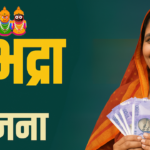Introduction
India’s demographic structure includes a significant portion of adolescents, among which girls represent a crucial segment that shapes the future of the nation. Recognizing the need for focused development of adolescent girls, the Government of India launched the Kishori Shakti Yojana (KSY) under the Ministry of Women and Child Development. Introduced as a component of the Integrated Child Development Services (ICDS) scheme in 2000, KSY aims to improve the nutritional, health, and educational status of adolescent girls, thereby empowering them to become self-reliant individuals.
Objectives of Kishori Shakti Yojana
The Kishori Shakti Yojana was designed with several key objectives:
-
Improve the nutritional and health status of girls aged 11–18 years.
-
Provide literacy and numeracy skills to girls who have dropped out of school.
-
Promote awareness of health, hygiene, nutrition, family welfare, and reproductive health.
-
Support skill development and training for self-employment.
-
Encourage adolescent girls to participate actively in community development.
By focusing on these areas, the scheme aims to address gender-based disadvantages and foster a generation of healthy, educated, and economically productive women.
Target Group and Implementation
The target group for KSY includes adolescent girls in the age group of 11 to 18 years, especially those who are out of school and come from marginalized communities. The scheme is implemented through Anganwadi Centres (AWCs) under the ICDS framework.
The adolescent girls are categorized into two groups:
-
11–14 years (Out-of-school girls): These girls are provided with education, nutrition, health care, and life skills training.
-
15–18 years: Focus is placed on vocational skills, guidance on reproductive health, and support for future employment.
The scheme is implemented through a convergence model, involving partnerships between departments such as Health, Education, Rural Development, and Panchayati Raj Institutions. This ensures that the various dimensions of adolescent development are addressed in a holistic manner.
Key Components of the Scheme
-
Nutritional Support:
Girls enrolled in KSY receive supplementary nutrition to address undernutrition and anemia. Regular health check-ups and growth monitoring are conducted. -
Non-Formal Education (NFE):
For out-of-school girls, basic literacy and numeracy are provided through non-formal education methods at Anganwadi Centres. -
Life Skills and Vocational Training:
KSY offers training in various life skills including self-defense, communication, leadership, and vocational skills such as tailoring, embroidery, and craftwork, enhancing employability. -
Health and Hygiene Education:
The scheme emphasizes awareness regarding personal hygiene, menstrual health, family planning, and substance abuse prevention. -
Empowerment and Participation:
Girls are encouraged to participate in group discussions, community meetings, and awareness campaigns, which builds their confidence and leadership qualities.
Achievements and Impact
Over the years, the Kishori Shakti Yojana has played an important role in empowering adolescent girls in rural and semi-urban India. It has:
-
Improved health and nutritional outcomes among participants.
-
Enabled many girls to re-enter formal education systems.
-
Equipped girls with income-generating skills, thereby enhancing their economic independence.
-
Fostered greater gender awareness and delayed the age of marriage in many cases.
However, the impact of the scheme has varied across states due to differences in implementation efficiency and resource availability.
Challenges
Despite its potential, KSY faces several challenges:
-
Inadequate infrastructure and trained personnel at the Anganwadi level.
-
Limited community participation, particularly in conservative regions.
-
Funding constraints that affect the delivery of quality services.
-
Overlapping with other schemes like the SABLA scheme (Rajiv Gandhi Scheme for Empowerment of Adolescent Girls), leading to administrative confusion.
Way Forward
To enhance the effectiveness of Kishori Shakti Yojana, the following steps are recommended:
-
Strengthen convergence among departments for comprehensive support.
-
Upgrade infrastructure at Anganwadi Centres.
-
Regular training and capacity building for Anganwadi workers.
-
Increased awareness campaigns to promote community support.
-
Integration of digital tools for monitoring and training.
Conclusion
The Kishori Shakti Yojana is a progressive initiative that addresses the multifaceted needs of adolescent girls. By investing in their health, education, and skills, the scheme contributes to building a more empowered and equitable society. With sustained policy attention and effective grassroots implementation, KSY can be a transformative force in shaping the future of India’s women and, consequently, the nation as a whole.





